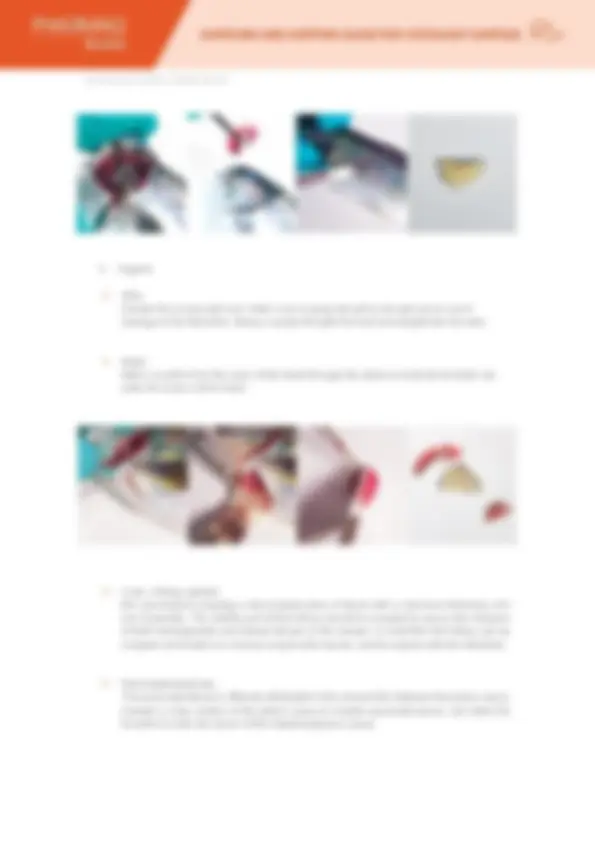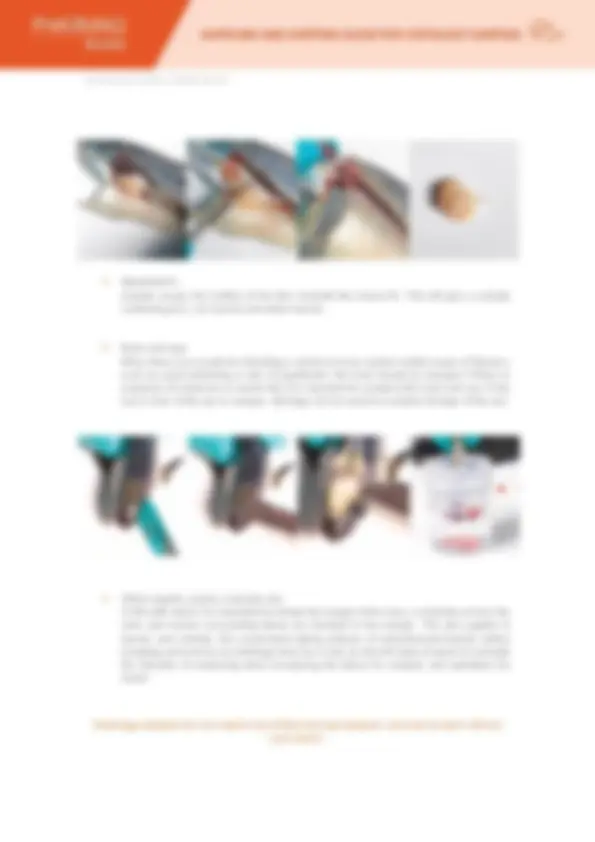




Study with the several resources on Docsity

Earn points by helping other students or get them with a premium plan


Prepare for your exams
Study with the several resources on Docsity

Earn points to download
Earn points by helping other students or get them with a premium plan
Community
Ask the community for help and clear up your study doubts
Discover the best universities in your country according to Docsity users
Free resources
Download our free guides on studying techniques, anxiety management strategies, and thesis advice from Docsity tutors
Guidelines for collecting and shipping histology samples from fish for disease investigation. It covers recommended equipment, sampling procedures for various organs and tissues, labeling, and storage recommendations. It emphasizes the importance of proper euthanasia, labeling, and avoiding damage to tissue during sampling.
What you will learn
Typology: Study notes
1 / 4

This page cannot be seen from the preview
Don't miss anything!



Order form Histology Formalin pots ***** (10% formalin) Styrofoam/cardboard box and specimen transport bag/zip lock bag ***** Forceps and scalpel/scissors Clean surface and paper towels
***** Formalin pots are included in the price and are sent to customers on request. The package with formalin pots from PHARMAQ Analytiq also contains order form and barcode form for histology and transport bags to prevent leakage of formalin during transport.
It is very important to make sure that the formalin pots are properly closed before putting them in the transport bag/zip lock bag for shipping!
General recommendations
Number of fish In general, we recommend to sample 5 fish for disease investigation. In cases with more complex problems, it may be necessary to sample more fish. Contact us for advice on sampling.
Selection of individuals to sample In order to obtain good quality samples, it is best to sample moribund instead of dead fish. After death, the decomposition of cells and tissue starts, and it is difficult to distinguish changes caused by decomposition from changes caused by disease. If there are no moribund fish to sample, it is important to sample as recently dead fish as possible. N.B. It is important to sample fish that is representative of the problem you want to investigate. Runts are normally not representative if there is an acute increase in mortality in an apparently healthy population.
Euthanasia It is important that the fish is euthanized by an overdose of sedative. Euthanizing the fish with a blow to the head can cause hemorrhage that makes the tissue unsuitable for histological evaluation.
Labeling of formalin pots To ensure traceability of the samples we recommend that all formalin pots are labeled with the name of the site/farm and date. If you register the samples electronically in Pharmaq Insight you will get a report number that you can label the pots with. Use one pot per fish and label the pot with fish number, for example F1 (fish1), F2, F
Single tissue samples If a single tissue (e.g. hearts or gills) is of interest and individual traceability is unnecessary, samples may be pooled with multiple gills/hearts from different individuals in the same formalin pot.
Size of tissue samples To secure optimal fixation of tissue by formalin, there should be a maximum of 1 part tissue per 10 parts formalin. The formalin penetrates and fixates at a rate of approximately 1 mm/hour, and it is therefore important that the tissue sample is not too thick. The optimal size of the sample is around 2-5 mm in thickness.
Cooling and storage of samples Samples can be stored in room temperature after sampling. N.B. Avoid high temperatures and freezing of the sample, as this will destroy the tissue!
Muscle/skin Sample across the midline of the fish, beneath the dorsal fin. This will give a sample containing skin, red muscle and white muscle.
Brain and eye When there are symptoms indicating a central nervous system related cause of disease, such as spiral swimming or loss of equilibrium, the brain should be sampled. If there is suspicion of nodavirus in marine fish it is important to sample both brain and eye. If the eye or lens of the eye is opaque, histology can be used to evaluate damage of the eye.
Other organs, ulcers, nodules, etc. In fish with ulcers it is important to sample the margin of the ulcer, so that tissue from the ulcer and normal, surrounding tissue are included in the sample. This also applies to tumors and nodules. We recommend taking pictures of ulcers/tumors/nodules before sampling and send to our histology team by e-mail, as this will make it easier to orientate the direction of sectioning when processing the tissue for analysis and optimizes the result.
Histology samples do not need to be chilled during transport, and can be sent without cool packs.